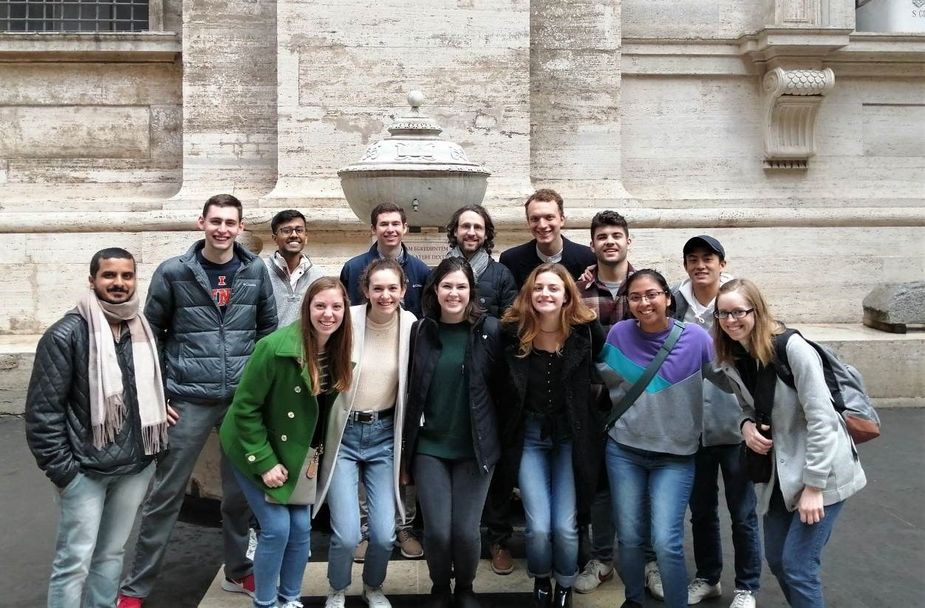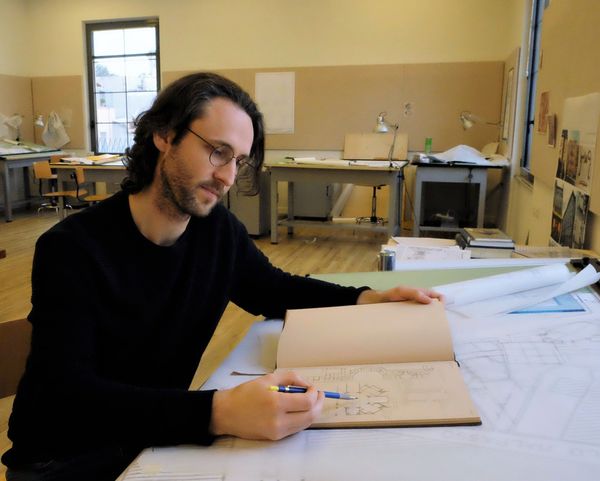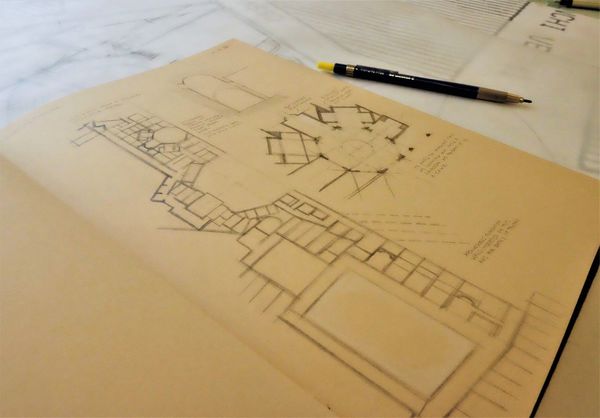Immersive introduction to the Spring 2020 semester

James Lengen ’21, a graduate student in the School of Architecture’s Path A - M.ADU Program, is originally from Fort Worth, Texas. He earned his M.Arch from University of Texas at Arlington and his B.A. from the University of Colorado. He is a member of Notre Dame’s Students for Classical Architecture. He joins the Rome Global Gateway this semester not only as part of an academic requirement, but also as a fulfillment of his personal and professional goals to gain a deeper understanding of classical architecture.
This semester the Rome Global Gateway is hosting 102 undergraduate and graduate students across the Rome Undergraduate Program, Rome International Scholars program, Aerospace and Mechanical Engineering, and the School of Architecture Rome Studies Program. As an introduction to the city, Gateway staff organized several unique historical visits during the first weeks of the semester, including tours of Domus Aurea, St. Peter’s Scavi, and the Colosseum. The cultural programming this semester, in addition to traditional activities like a visit to an organic family-run winery, a ceramics class with local artisans, and cooking lessons with a Roman chef, includes exclusive, behind-the-scenes tours of the archaeological and historic sites students study in their All Roads Lead to Rome and architecture courses.

James Lengen, a graduate student interested in history and architecture, joined for all three visits. He had previously visited Rome during a backpacking tour of Europe, but arrived for the semester with a goal to immerse himself in the city. Lengen describes, “Rome is the epicentre of classical architecture and really developed a lot of what we think of as international classical architecture with its Imperial history. They adapted the Greek and Hellenistic models and made it something that they (ancient Romans) not only built here in the city but exported. And, the rest is history from there. The classicism we use in the United States derives from Rome. Being able to see the original is really important.”
Within weeks of arriving in Rome, Lengen was exploring Domus Aurea, the archaeological restoration site of Emperor Nero’s ancient palace, just steps from the Rome Global Gateway. Like many Roman sites, Domus Aurea contains layers of history. Visitors enter through a Roman bath built atop the original palace. Lengen, who had been working on a sketch of this site as part of his program, especially enjoyed the virtual reality experience which reconstructed the ruins through special glasses. “The wall in front of you opens up and you can see the gardens that were there. Now this is all underground but then it opened up to hill where below is what’s now the site of the Colosseum. At the time of Nero, it was a lake that was filled in to build the Colosseum.” The visit also gave Lengen the opportunity to meet other Rome Global Gateway students. “There were a lot of people there with different backgrounds and majors. It was interesting to see their perspective and thoughts on it as well.”
 James' sketch of Domus Aurea
James' sketch of Domus AureaThe following weekend, students visited St. Peter’s Scavi, an underground necropolis containing the tomb of St. Peter. Not open to the general public, this is a unique opportunity to see a very special part of the Vatican. Lengen was surprised to see the diversity of those buried. “There are tombs of the Egyptian rite, Greco-Roman religious burials, and Christian burials. It’s a good representation of that kind of melting pot of the late Roman Empire,” Lengen shares. Containing over two thousand years of history, the site is under constant excavation and preservation.
The third visit provided students with a different perspective on an iconic Roman structure. While most visitors tour the Colosseum, not many get to explore the underground level. “The first thing we did was we walked right in on the floor of the level of the arena. You can take in the grandstands like you’re someone participating in the event,” Lengen describes. The visit continues one floor below through the passageways and thick travertine foundation. Not all areas are accessible due to reconstruction and excavation, but it provides an extraordinary opportunity to learn about the work of archaeologists. Even the ancient sewers, Lengen learned, contain traces of history, including Roman coins, ancient toys, and bones.
There’s more to see and do in Rome, with Villa Borghese and various Baroque churches topping Lengen’s list. Following his graduation next year, Lengen hopes to return to Rome in a professional capacity, possibly even working on or researching some of the sites he recently visited. “I probably wouldn’t have been able to see all of these places otherwise. The university organizing these visits is a big help. There’s so much to see and do that it’s hard to do it on your own.”
Subscribe to the Rome Global Gateway Newsletter to keep up on what's happening in Rome this semester.